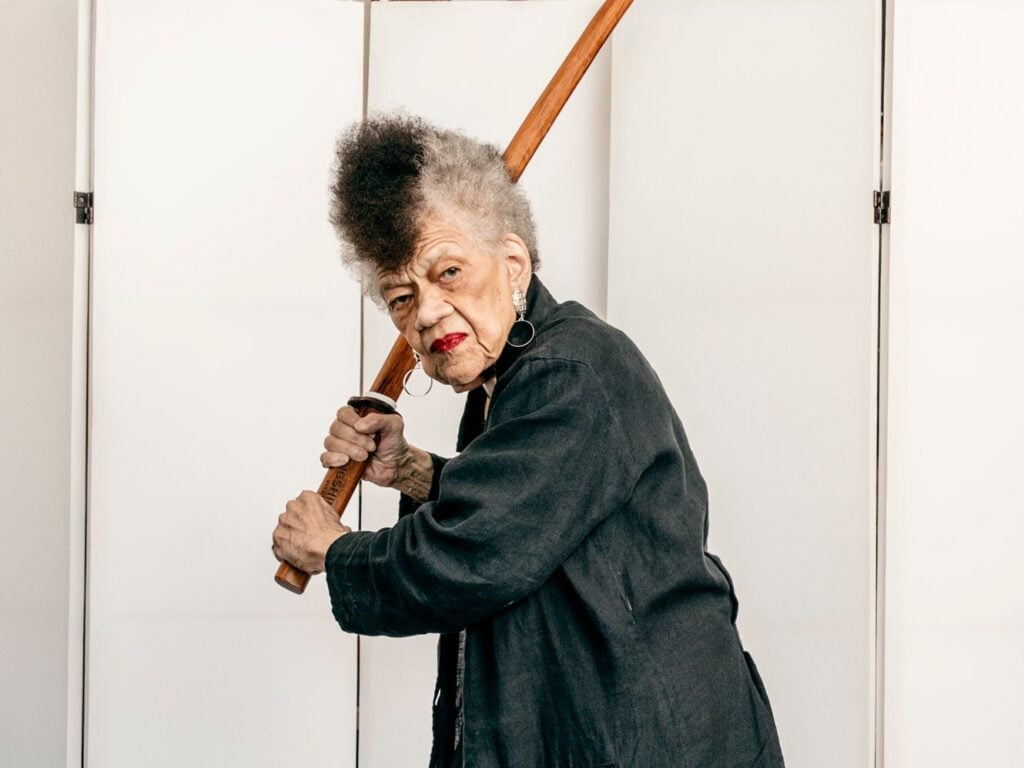Lorraine O’Grady

Lorraine O’Grady (1934–2024) was a conceptual artist and cultural critic whose work over four decades employed the diptych — or at least the idea of the diptych — as its primary form. While she consistently addressed issues of diaspora, hybridity, and Black female subjectivity, and emphasised the formative roles these have played in the history of modernism, O’Grady also used the diptych’s “both/and thinking” to frame her themes as symptoms of a larger problematic: the divisive and hierarchical either/or categories underpinning Western philosophy.
Across O’Grady’s works in various genres — including text, photo-installation, video, and performance — multiple emotions and ideas coexist. Personal and aesthetic attitudes often considered contradictory, such as anger and joy, or classicism and surrealism, are not separated. Even her technical methods seem governed simultaneously by chance and obsessive control, allowing political argument and unapologetic beauty to coexist. Throughout her practice, essays and images interpenetrate.
While O’Grady’s diptychs are sometimes explicit, with two images placed side by side, at other times they are implicit — as when two types of hair, silk and tumbleweed, videotaped on the same scalp at different hours of the same day, alternate and interact to create permeating worlds. The aim of her diptychs was never to achieve a mythic “reconciliation of opposites”; rather, it was to enable — or even compel — a conversation between dissimilar elements long enough to induce familiarity. For O’Grady, the diptych provided a means to image the kind of “both/and” or “miscegenated” thinking needed to counter and destabilise the Western binary of “winners or losers”, a structure continuously producing supremacies — from the intimate to the political — of which white supremacy is only the most overarching.
An early adopter of digital technology, O’Grady created the website lorraineogrady.com, regarded as a model for the abbreviated digital archive; her paper archive is held in the Wellesley College Library. Among her writings, the 1992/94 long-form essay “Olympia’s Maid: Reclaiming Black Female Subjectivity” has proved an enduring contribution to art history and intersectional feminism and is now considered canonical.
O’Grady’s artworks have been acquired by major institutions, including the Art Institute of Chicago, IL; the Museum of Modern Art, New York; Tate Modern, London; the Museum of Fine Arts, Boston; and the Whitney Museum of American Art, New York.






